
Iceland's defence forces consist of the Icelandic Coast Guard, which patrols Icelandic waters and monitors its airspace, and other services such as the National Commissioner's National Security and Special Forces Units. Iceland maintains no standing army, the only NATO member for which this is the case.
The Cod Wars were a series of 20th-century confrontations between the United Kingdom and Iceland about fishing rights in the North Atlantic. Each of the disputes ended with an Icelandic victory.

The Icelandic Coast Guard is the Icelandic defence service responsible for search and rescue, maritime safety and security surveillance, national defense, and law enforcement. The Coast Guard maintains the Iceland Air Defence System which conducts ground-based surveillance of Iceland's air space and operate Keflavik airbase. It is also responsible for hydrographic surveying and nautical charting.
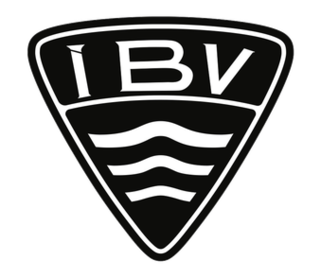
Íþróttabandalag Vestmannaeyja (ÍBV) is an Icelandic multi-sports district association from Vestmannaeyjar off the south coast of Iceland. It was founded in 1903 as Knattspyrnufélag Vestmannaeyja by Björgúlfur Ólafsson, military doctor for the Dutch army. It was soon renamed to Knattspyrnufélag Vestmannaeyja (KV) and then to Íþróttabandalag Vestmannaeyja (ÍBV) héraðssamband in 1945. ÍBV played as KV in the first Icelandic first league tournament in 1912.
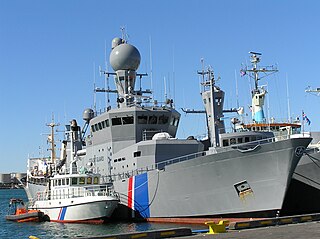
ICGV Týr is an Ægir-class offshore patrol vessel and the former flagship of the Icelandic Coast Guard. The ship was built by Dannebrog Værft in Denmark in 1974–1975 and entered service in 1975. Týr is the second largest ship in the Icelandic Coast Guard and participated in the Third Cod War. The ship conducted patrols, search and rescue, fishery inspections, general law enforcement and counter-terrorism operations in the Icelandic exclusive economic zone and the waters of the surrounding territories, such as Greenland and Jan Mayen. Týr was decommissioned in 2021 and sold in 2022.

ICGV Ægir is a former offshore patrol vessel of the Icelandic Coast Guard. Built by Aalborg Værft, in Denmark, she is the lead ship of the Ægir class and has one sister ship of an improved design, ICGV Týr. The ship entered service in 1968 and participated in the two last Cod Wars against the United Kingdom. Ægir primarily conducts patrols, search and rescue, fishery inspections, general law enforcement and counter-terrorism operations in the Icelandic exclusive economic zone. In 2020, the patrol vessel was taken out of service and sold two years later.

ICGV Óðinn is a decommissioned offshore patrol vessel formerly operated by the Icelandic Coast Guard. She is the oldest ship in the coastguard's fleet, and it is believed that her Burmeister & Wain engines are the only such engines that are still serviceable in the world today. Since her withdrawal from active duty, she has served as a floating exhibit at the Reykjavík Maritime Museum in Reykjavík Harbour. The ship is still maintained, and operative as of June 2022.
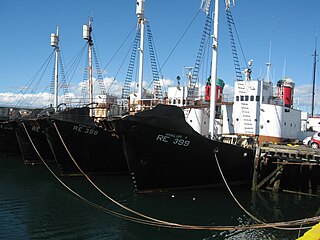
Whaling in Iceland began with spear-drift hunting as early as the 12th century, and continued in a vestigial form until the late 19th century, when other countries introduced modern commercial practices. Today, Iceland is one of a handful of countries that formally object to an ongoing moratorium established by the International Whaling Commission in 1986, and that still maintain a whaling fleet. One company remains concentrated on hunting fin whales, largely for export to Japan, while the only other one previously hunted minke whales for domestic consumption until 2020, as the meat was popular with tourists. In 2018, Icelandic whalers were accused of slaughtering a blue whale. Whaling was temporarily paused in Iceland between 2019 and 2021 as coronavirus restrictions, competition from subsidized Japanese whaling, and increasing domestic whale watching tourism have hampered the industry, however the practice is set to resume in 2022. A ban may come about by 2024 due to low demand and profitability. Iceland has a whale watching sector, which exists in tension with the whaling industry.
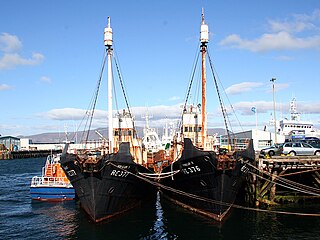
The 1986 Hvalur sinkings occurred in Iceland's Reykjavík harbour in November 1986, when anti-whaling activists from the Sea Shepherd Conservation Society sank the unoccupied whaling vessels, Hvalur 6 and Hvalur 7, and sabotaged a whale processing station in Hvalfjörður. The ships were two of the nation's fleet of four and were eventually raised, but have not gone on a whale hunt since and were dragged onto dry land. Repairs have still not yet been made to the ships some 36 years later. The factory was the country's only processing facility.

The 1995 Súðavík avalanche was an avalanche that struck the small fishing village of Súðavík in Iceland’s Westfjords on 16 January 1995, killing 14 people, including eight children, and injuring twelve. The disaster, along with the avalanche that killed 20 in Flateyri later in the year, had a profound effect on the nation and sparked a massive buildup of avalanche dams to protect towns in danger zones.
ICGV Baldur was a naval trawler of the Icelandic Coast Guard. The second coast guard ship to bear the name, it served in the third Cod Wars conflict between Iceland and the United Kingdom. Due to its sharp stern, Baldur could inflict heavy damage on British ships colliding with its stern section and knocked out three frigates during the conflict.

Sif, also known as TF-SIF, is an Aerospatiale SA365N Dauphin 2 helicopter used by the Icelandic Coast Guard from 1985 to 2007. It took part in several high profile rescue operations around Iceland during its 22-year career and is credited to have been involved in the rescue of around 250 lives. It is named after Sif, the golden-haired goddess from Norse mythology and is the third Coast Guard aircraft to bear the name. Since 2008, it has been on display at the Icelandic Aviation Museum.

Líf, also known as TF-LÍF, is an Aérospatiale AS-332L1 Super Puma helicopter used by the Icelandic Coast Guard. It is named after Líf, the only woman foretold to survive the events of Ragnarök from Norse mythology, and is the first Coast Guard aircraft to bear the name. It is the longest serving helicopter in the history of the ICG and gained national fame when it rescued 39 sailors in three separate incidents during a six-day period in March 1997.
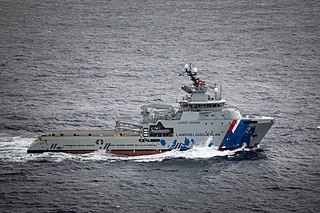
ICGV Freyja is an offshore patrol vessel of the Icelandic Coast Guard. The ship is named after Freyja from Norse mythology and is the first Coast Guard vessel to bear the name of a goddess. Its homeport is Siglufjörður on the north coast of Iceland.
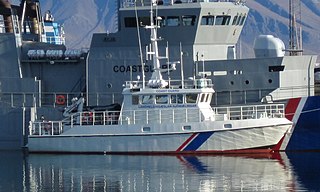
ICGV Baldur is a patrol and survey vessel of the Icelandic Coast Guard. The ship was built by Vélsmiðja Seyðisfjarðar in Iceland in 1991 and entered service the same year. Over its three decade career it has been used for hydrographic surveying, patrol, law enforcement, exercises and various other projects along the country's shores. The ship is named after the Norse god Baldur and is the third coast guard vessel to bear the name.

Hvalur 8 RE-388 is an Icelandic whaling ship built in 1948 in Norway. It has been a part of the Icelandic whaling fleet operated and owned by the company Hvalur hf. since 1962.
Kristján Loftsson is an Icelandic businessman and a whaler. He has been the CEO of the commercial whaling and investment company Hvalur hf. since 1974 and is, along with his sister, its largest shareholder.
Hvalur hf. is an Icelandic commercial whaling and holding company. Hvalur hf. was founded in 1947 as a commercial whaling company by Loftur Bjarnason and Vilhjálmur Árnason and later run by their sons, Kristján Loftsson and Árni Vilhjálmsson. In the recent decades, it has become one of the most powerful investment company in Iceland, having owned large shares in Arion Bank, Marel, Origo hf. and Brim hf. amongst others.

Hvalur 6 RE-376 is an Icelandic whaling ship built in 1946 in England by Smith's Dock Company. It has been a part of the Icelandic whaling fleet operated and owned by the company Hvalur hf. since 1961. It was bought, along with its sister ship Hvalur 7, to replace the aging Hvalur 2 and Hvalur 3 which where built between 1920 and 1930.
Edda Andrésdóttir is an Icelandic journalist, news anchor and writer.














